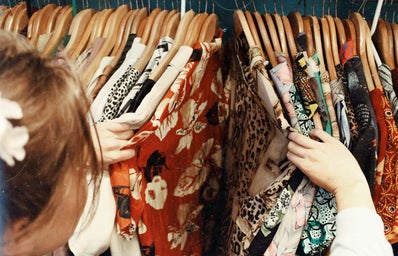Every person I’ve ever encountered loves TJ Maxx or Marshalls. They are the Targets of clothing. You walk in for maybe one shirt or some sheets and you walk out with a new wardrobe entirely. Everything is cheaper. From the on-trend home decorations to the endless racks of sweaters, you suddenly find your cart filled with random things you didn’t know you needed.
I went into TJ’s last week to pick up a planner and walked out with that and a new sweater set amongst other random clothes I plucked from the racks. The deals are great and the clothes are readily available. But what’s the cost of these conveniently affordable clothes?
While everyone loves a good deal, fast fashion such as TJ Maxx, Marshalls, and other stores, have a large impact on the environment today. Starting with the impact on water usage, of all water used in industries, the fashion industry uses one-tenth of it to run factories and clean products. According to research done by Princeton, 20% of worldwide wastewater comes from fast fashion. Many chemicals from manufacturing also get released into natural waterways and pollute oceans and other natural bodies of water (princeton.edu).
Another issue investigated by the Columbia Climate School is the impact of microfibers and plastics from the fashion industry. Microplastics are found in athleisure clothing, which became increasingly popular during the pandemic. Athleisure clothing consists of athletic wear, spandex, leggings, and any stretchable/breathable clothing. Athleisure clothing is made using synthetic plastic fibers. When clothes made with synthetic fibers are washed, microfibers come off into the wastewater. These microfibers then filter out at treatment plants into human waste used as fertilizer. The microfibers then enter and pollute the soil when the fertilizer is used. Those that elude treatment end up in natural waterways. 35% of microplastics in the ocean today come from the fashion industry (Climate Columbia).
Each year the fashion industry produces 1.2 million metric tons of CO2. Around 70 million trees are cut down to make material, waterways are polluted, and landfills fill to the brim with forgotten clothes. The fashion industry is driven by trends. As time goes on styles change, what was in is now out. Due to social pressures surrounding the fashion industry and people’s needs to keep up with the times, many clothes don’t last long and get thrown out. While the most sustainable thing to do is to thrift or donate old clothes, 57% of thrown-out clothes end up in landfills. Since clothes today are made so cheaply, not many people think twice about tossing them out. Landfills often lead to air pollution as the clothes are incinerated once the dump is overflowing. The gasses from the incineration travel to nearby communities and into the atmosphere releasing carbon dioxide and toxic gasses.
There’s no better feeling while shopping than finding the clothes that make you feel blissful and confident. Everyone loves searching for wardrobes that express our styles and match our lifestyles. But there is an environmental cost when it comes to fast fashion and dumping old clothes.
Picking up habits such as reselling and thrifting alone helps. But it is also important to look at what materials you’re buying and company policies on waste. Sustainable fashion is becoming a more pressing habit to pick up.


